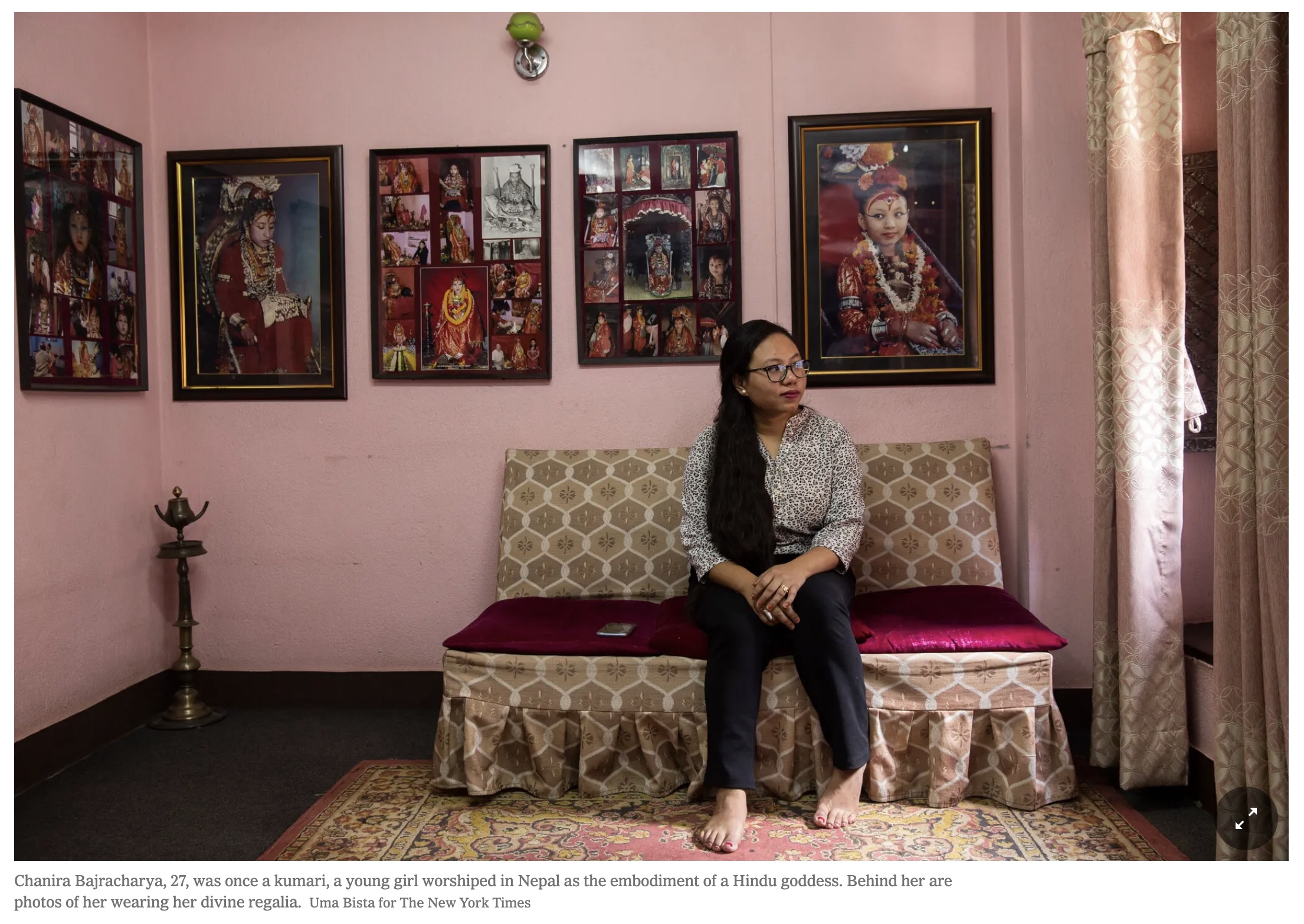PATAN, NEPAL, July 16, 2022 (New York Times): When the 6-year-old Goddess wept for four days, it was viewed as a terrible omen for Nepal, and her tears appeared to have foreshadowed a national tragedy. On the last day of her crying, June 1, 2001, the crown prince of Nepal killed nine members of the royal family, including his parents, King Birendra and Queen Aishwarya, before shooting himself. More than 20 years later, in a nondescript office in Patan, an ancient city a few miles from the capital, Kathmandu, that girl who had been worshiped as a Goddess was now a woman concerned with more earthly matters: Chanira Bajracharya, a freshly minted M.B.A., was handling loan applications at the financial services firm where she works. Her ability to land a corporate job has set her apart from most other former kumari, women who in their prepubescent youth were worshiped as the living embodiment of a Hindu Goddess — but most of whom were denied education.
People used to think that because she’s a Goddess, she knows everything,” said Ms. Bajracharya, 27. “And who dares to teach a Goddess?” She was speaking at the family home in Patan, where she had performed her divine duties for 10 years. Most kumari before Ms. Bajracharya, including her aunt, Dhana Kumari Bajracharya, received no formal education. Losing their divinity when they get their first period, many enter adulthood illiterate and struggle to find a life beyond the throne. Ms. Bajracharya is working to change that, urging the current crop of young Goddesses to study as she did, which she believes will not only help them, but also help protect the institution.
Much more on the kumari tradition at source.
https://www.nytimes.com/2022/07/15/world/asia/nepal-kumari-living-goddess.html
A daily summary of world news for Hindus and non-Hindus alike

